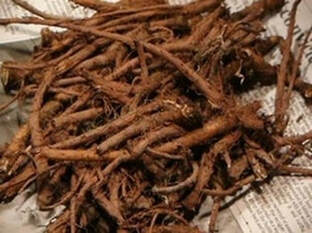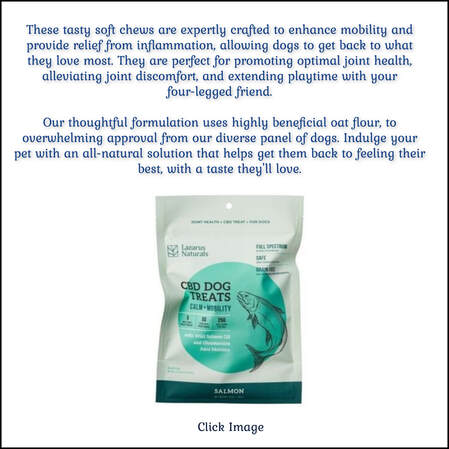
Family: Asteraceae
Clinical Actions: Diuretic, cholagogue
Energetics: cool, bitter
Selected Constituents: Triterpenes, flavonoids, inulin, saponins, phenolic acids, quercetin glycosides
Parts Used: Flowers, leaves, root
Used For: Digestive and liver tonic (root); pancreatitis, edema (leaf)
Dose: Infusion: 5- 30 grams dried herb infused in 8 ounces of water; 1/4 to 1/2 cup per 20 pounds BW; given three times a day
(Taraxacum officinale) Another humble, common, everyday plant with a whole host of uses. I LOVE dandelions…their warm sunny fuzzy flower faces, their cheerful attitude – and their medicine. Like mullein, all parts of the plant have specific actions and uses; major affinity is for the liver and gallbladder, but there’s more to dandelion than this. The leaf and root are valuable for many conditions involving edema (water retention) and the flowers are extremely high in antioxidants. I tend to use root and leaf together, in decoction/infusion - and mostly with liver, kidney and heart disease, for canines.
NOTE: Dandelion should not be used in cases of bile duct obstruction, in acute gallbladder inflammation and the high mineral content *may* affect the absorption of a class of antibiotics (quinolones).
Clinical Actions: Diuretic, cholagogue
Energetics: cool, bitter
Selected Constituents: Triterpenes, flavonoids, inulin, saponins, phenolic acids, quercetin glycosides
Parts Used: Flowers, leaves, root
Used For: Digestive and liver tonic (root); pancreatitis, edema (leaf)
Dose: Infusion: 5- 30 grams dried herb infused in 8 ounces of water; 1/4 to 1/2 cup per 20 pounds BW; given three times a day
(Taraxacum officinale) Another humble, common, everyday plant with a whole host of uses. I LOVE dandelions…their warm sunny fuzzy flower faces, their cheerful attitude – and their medicine. Like mullein, all parts of the plant have specific actions and uses; major affinity is for the liver and gallbladder, but there’s more to dandelion than this. The leaf and root are valuable for many conditions involving edema (water retention) and the flowers are extremely high in antioxidants. I tend to use root and leaf together, in decoction/infusion - and mostly with liver, kidney and heart disease, for canines.
NOTE: Dandelion should not be used in cases of bile duct obstruction, in acute gallbladder inflammation and the high mineral content *may* affect the absorption of a class of antibiotics (quinolones).
More on Dandelion:
DANDELION Taraxacum officinale Sunflower family
by Greg Tilford c.2010
Appearance: Its time for all good herbalists to put their egos aside…Dandelion is actually confused with several other species of the Sunflower Family. And although we may hate to admit it, many of us have been fooled into using one of the look-alikes. The primary consideration to bear in mind when identifying Taraxacum officinale or any of its hundreds of variations is this: Dandelion has no branching characteristics, but instead grows in a rosette fashion, directly off of its taproot. And dandelion never has spines on its midrib, as does Lactuca serriola (“Prickly Lettuce” - illus.), which otherwise looks very similar when young. Although dandelion’s impostors likely won’t harm you, they won’t offer you dandelion’s benefits either!
Habitat & Range: A native of Europe and Asia, dandelion has found its way onto every continent— except, maybe, Antarctica.
Cycle & Bloom Season: A perennial that may bloom several times throughout the year. In areas of severe winter climate, dandelion may appear only as a free-seeding annual.
Parts Used: All parts of the plant are useful, for various applications.
Actions: Diuretic, cholagogue, bitter, nutritive, anti-inflammatory, tonic, laxative.
Affinities: Liver, gallbladder, gastrointestinal tract.
Preparation: Water infusion (tea), decoction, tincture, fresh or dried leaves and flowers.
DANDELION Taraxacum officinale Sunflower family
by Greg Tilford c.2010
Appearance: Its time for all good herbalists to put their egos aside…Dandelion is actually confused with several other species of the Sunflower Family. And although we may hate to admit it, many of us have been fooled into using one of the look-alikes. The primary consideration to bear in mind when identifying Taraxacum officinale or any of its hundreds of variations is this: Dandelion has no branching characteristics, but instead grows in a rosette fashion, directly off of its taproot. And dandelion never has spines on its midrib, as does Lactuca serriola (“Prickly Lettuce” - illus.), which otherwise looks very similar when young. Although dandelion’s impostors likely won’t harm you, they won’t offer you dandelion’s benefits either!
Habitat & Range: A native of Europe and Asia, dandelion has found its way onto every continent— except, maybe, Antarctica.
Cycle & Bloom Season: A perennial that may bloom several times throughout the year. In areas of severe winter climate, dandelion may appear only as a free-seeding annual.
Parts Used: All parts of the plant are useful, for various applications.
Actions: Diuretic, cholagogue, bitter, nutritive, anti-inflammatory, tonic, laxative.
Affinities: Liver, gallbladder, gastrointestinal tract.
Preparation: Water infusion (tea), decoction, tincture, fresh or dried leaves and flowers.
Specific Uses: To begin an accurate assessment of Dandelion’s deep-reaching medicinal attributes, we must first put healing into a whole body perspective. All higher organisms (including dogs, cats, birds, mice, lizards, goats and even humans) maintain vital body functions within tightly knit parameters of systemic cooperation. A precise and balanced relationship between nutrition and elimination of waste is a critical part of this cooperation, and if a systemic excess or deficiency occurs that the body cannot correct through elimination, supplementation, or immune system intervention, it will try to compensate by shutting down a system or storing waste materials wherever it can. In other words, a state of “dis-ease” results.
Dandelion is one of the most complete plant foods on Earth. A one cup serving of fresh dandelion greens will provide as much as 2000 I.U.’s of vitamin A (1 1/2 times the RDA for an adult human), 20% protein (by content… that’s double of what spinach provides), vitamins C, K, D, and B complex; iron, manganese, phosphorus and many other trace minerals; and an especially rich source of potassium. All of these vital nutrients are conveniently contained within a single source, in quantities that the body can fully absorb. This means that dandelion will gently supplement diet without overworking the liver and kidneys with excess vitamins and minerals (this is often signified by dark urine).
Dandelion is one of the most complete plant foods on Earth. A one cup serving of fresh dandelion greens will provide as much as 2000 I.U.’s of vitamin A (1 1/2 times the RDA for an adult human), 20% protein (by content… that’s double of what spinach provides), vitamins C, K, D, and B complex; iron, manganese, phosphorus and many other trace minerals; and an especially rich source of potassium. All of these vital nutrients are conveniently contained within a single source, in quantities that the body can fully absorb. This means that dandelion will gently supplement diet without overworking the liver and kidneys with excess vitamins and minerals (this is often signified by dark urine).
Supplementing your companion animal’s diet with dandelion leaf is as simple as drying the greens and crumbling them onto his food. If that doesn’t work, or if you need to get nutrients into your animal more quickly, try making a leaf tea using organic, unsalted vegetable or meat broth in place of plain water. Plan on feeding about a teaspoon of the dried herb for each 20 pounds of body weight daily. Horses, llamas, sheep, goats, mules, and other large animals will often eat the greens directly out of their pasture…If they don’t like it, try hand feeding or adding a little molasses. If your animal is sensitive to changes in diet, then start him off with a little at a time.
In addition to providing your animal with many of the nutrients he needs, the leaves possess what herbalists call a “bitter tonic” principle. The idea is to “warm up” digestive metabolism before the digestive system is forced to go to work—when a small amount of a bitter herb is taken into the mouth, the recipient immediately experiences a sudden increase of salivation. Then, as the bitter herb reaches the stomach, bile and other digestive agents are then triggered into production.
The result: more efficient digestion, reduced indigestion, better absorption of nutrients, and increased appetite. Dandelion leaf is particularly useful in animals which have a chronic problem with indigestion. If your animal has frequent gas and/or passes food that does not appear digested, get him to chew a fresh dandelion leaf while you reconsider his diet, or apply a few drops of dandelion tincture (an herbal glycerite is most palatable) onto his tongue. It doesn’t matter if the animal doesn’t appear to swallow it; the bitter action is triggered in the mouth.
In addition to providing your animal with many of the nutrients he needs, the leaves possess what herbalists call a “bitter tonic” principle. The idea is to “warm up” digestive metabolism before the digestive system is forced to go to work—when a small amount of a bitter herb is taken into the mouth, the recipient immediately experiences a sudden increase of salivation. Then, as the bitter herb reaches the stomach, bile and other digestive agents are then triggered into production.
The result: more efficient digestion, reduced indigestion, better absorption of nutrients, and increased appetite. Dandelion leaf is particularly useful in animals which have a chronic problem with indigestion. If your animal has frequent gas and/or passes food that does not appear digested, get him to chew a fresh dandelion leaf while you reconsider his diet, or apply a few drops of dandelion tincture (an herbal glycerite is most palatable) onto his tongue. It doesn’t matter if the animal doesn’t appear to swallow it; the bitter action is triggered in the mouth.
Dandelion is well known among herbalists as a safe but powerful diuretic and liver stimulant. Congestive heart failure, pulmonary edema, arthritis, gallbladder disease, kidney stones— these are all imbalances resulting from the body’s inability to eliminate water and/or accumulated excesses. In mainstream practices, drugs such as furosimide (widely known under the brand name “Lasix“) are often used to drain off excess fluid from the body and thus promote the elimination of accumulated waste materials. Pharmaceutical diuretics are fast-acting, easy to administer, and very effective, but while they do a great job at expelling fluid, they tend not to discriminate between what the body needs to keep and what it needs to lose. As a result, the body often loses too much potassium, a crucial heart and brain chemical, through urination. In this event, potassium must be supplemented throughout the therapy. Dandelion leaf on the other hand, contains its own rich source of fully assimilable potassium; an attribute which helps to replace what would otherwise be lost through urination.
How effective is dandelion as a diuretic?
Many contemporary herbalists claim that dandelion may be as effective as the aforementioned furosemide. The big trade-offs though are ease of administration, getting enough of the tea into the animal to bring about desired effects, and the time it may take for dandelion to start working. While furosemide can be administered in a little pill, a dandelion therapy involves getting your animal to drink warm tea or take a tincture extract (again, the aforementioned broth method works nicely). None of this is to encourage you to stop the diuretic therapy which has been prescribed by your veterinarian…if you wish to seek the dandelion alternative, see a holistic veterinarian first.
How effective is dandelion as a diuretic?
Many contemporary herbalists claim that dandelion may be as effective as the aforementioned furosemide. The big trade-offs though are ease of administration, getting enough of the tea into the animal to bring about desired effects, and the time it may take for dandelion to start working. While furosemide can be administered in a little pill, a dandelion therapy involves getting your animal to drink warm tea or take a tincture extract (again, the aforementioned broth method works nicely). None of this is to encourage you to stop the diuretic therapy which has been prescribed by your veterinarian…if you wish to seek the dandelion alternative, see a holistic veterinarian first.
While dandelion’s leaves are very nutritive and diuretic, the root possesses its own usefulness as a safe, reliable liver tonic. The liver is the primary filtering organ of the body; responsible for removing toxins and excesses from the blood for elimination via the kidneys. The liver also plays critical roles in digestion through its production of bile, bilirubin, and various enzymes. If bile ducts in the liver or gall bladder become congested, blocked, or otherwise diseased to the point of dysfunction, the body will invariably suffer one or more toxicity related imbalances. Such imbalances may be characterized by symptoms such as jaundice, rheumatoid conditions, eczema, dandruff, or chronic constipation. And while dandelion leaf tea or tincture may do much toward relieving the symptoms of such conditions through a nutritive/diuretic action, the root will work closer to the underlying causes.
Dandelion root has a well validated ability to stimulate bile production and circulation throughout the liver. In one study involving dogs (and please bear in mind that we strongly oppose animal testing), researchers observed a three to four times increase in bile production after administration of dandelion root. The gallbladder, which stores bile from the liver, is also stimulated; causing this small, hollow organ to contract and release bile into the digestive tract, thus aiding in digestion and acting as a gentle laxative to promote the elimination of solid waste.
One of the best things about dandelion root as a liver and gallbladder stimulant is its gentle nature. Unlike many cholagogue herbs, dandelion does not further irritate an already inflamed condition. In fact, in clinical studies using an over-the-counter preparation of the root, dandelion was shown to be effective in treating inflammatory diseases of the liver and gallbladder (including gallstones).
Dandelion root has a well validated ability to stimulate bile production and circulation throughout the liver. In one study involving dogs (and please bear in mind that we strongly oppose animal testing), researchers observed a three to four times increase in bile production after administration of dandelion root. The gallbladder, which stores bile from the liver, is also stimulated; causing this small, hollow organ to contract and release bile into the digestive tract, thus aiding in digestion and acting as a gentle laxative to promote the elimination of solid waste.
One of the best things about dandelion root as a liver and gallbladder stimulant is its gentle nature. Unlike many cholagogue herbs, dandelion does not further irritate an already inflamed condition. In fact, in clinical studies using an over-the-counter preparation of the root, dandelion was shown to be effective in treating inflammatory diseases of the liver and gallbladder (including gallstones).
The flowers of dandelion are known by herbalists to be high in lecithin and to have weak but useful analgesic qualities. The usefulness here stems from the fact that they don’t contain any salicylates; the alkaloid compounds found in aspirin which are toxic to cats and may be irritating to the stomach lining. To use the flowers, infuse a generous handful in a cup of near-boiling water. When the water has darkened as much as possible, it can be cooled and administered with a dropper… 30-40 drops per 20 pounds of body weight. If this proves to be a nightmare for you and your animal, try drying the flowers and sprinkling them on his or her food. You shouldn’t expect aspirin-like effectiveness; but it is a mild pain-killing option worth considering.
Dandelion is perhaps the first herb to consider when optimized digestion and waste elimination is a necessary part of an herbal therapy. In holistic healing, the body, whether be it animal or human, should not be viewed as a collection of individual body systems, but as an intricately-balanced cooperation of relative components. From this perspective it is easy to see how dandelion can serve a positive role in its effort to help the body at what it is designed to do—stay healthy. The body cannot achieve this fundamental goal unless it is able to effectively utilize nutrients and eliminate its waste—and dandelion is here to help.
Availability: Everywhere!
Dandelion is perhaps the first herb to consider when optimized digestion and waste elimination is a necessary part of an herbal therapy. In holistic healing, the body, whether be it animal or human, should not be viewed as a collection of individual body systems, but as an intricately-balanced cooperation of relative components. From this perspective it is easy to see how dandelion can serve a positive role in its effort to help the body at what it is designed to do—stay healthy. The body cannot achieve this fundamental goal unless it is able to effectively utilize nutrients and eliminate its waste—and dandelion is here to help.
Availability: Everywhere!
Propagation & Harvest: If you wish to propagate dandelion (no, I’m not insane!), give them deep humus-rich soil, full sun. Gather dandelion greens in early spring for use in salads, they get bitter with age. Leaves intended for herbal teas and medicines can be gathered anytime, provided it is done in dry weather. Wet dandelions tend to develop mold while they are drying…don’t wash them after picking! Shake them off and dry them on newspapers in a well ventilated area, away from light. Then stir them often to prevent molding and store them in baggies only after they are completely, crispy dry. Gather the roots as late in fall as possible; this is when they contain the greatest concentration of beneficial constituents. Chop them up (I use a food processor), then spread them onto newspaper and dry with the same consideration you gave to the leaves.
Alternatives and Adjuncts: For liver and digestive problems, check out milk thistle, burdock, yellow dock, marshmallow, chickweed, and Oregon grape as possible adjuncts or alternatives.
Alternatives and Adjuncts: For liver and digestive problems, check out milk thistle, burdock, yellow dock, marshmallow, chickweed, and Oregon grape as possible adjuncts or alternatives.



















